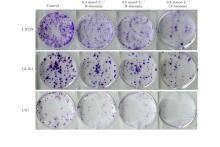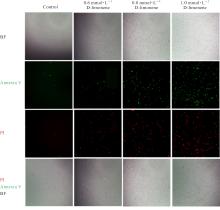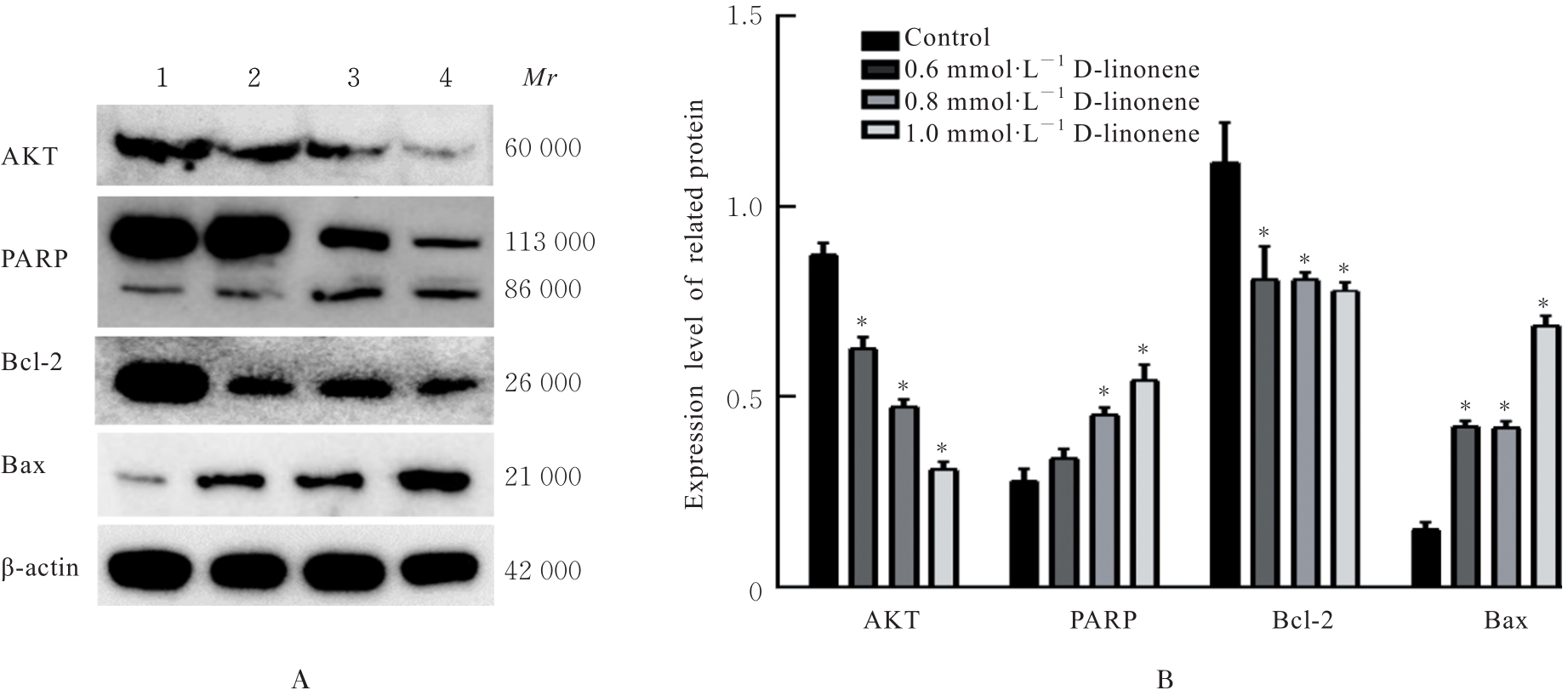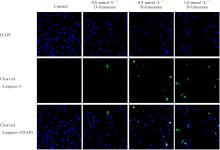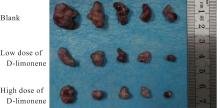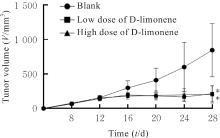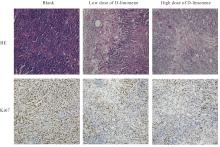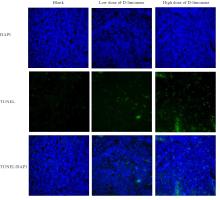| [1] |
Xuejun JIN,Chuyuan LU.
Inhibitory effect of leucovorin on growth and angiogenesis of subcutaneous transplanted tumors in mouse lung cancer cells and its mechanism
[J]. Journal of Jilin University(Medicine Edition), 2024, 50(3): 612-619.
|
| [2] |
Jiacai FU,Lingsha QING,Lu YANG,Meihui SONG,Xianying ZHANG,Xiaocui LIU,Fengjin LI,Ling QI.
Inhibitory effect of Schisandrin B on proliferation of pancreatic cancer Pan02 cells and its mechanism
[J]. Journal of Jilin University(Medicine Edition), 2024, 50(3): 638-646.
|
| [3] |
Lin CHEN,Limin YAN,Huaijie XING,Min CHEN,Xiaoyan LI,Chaosheng ZENG.
Improvement effect of Xuebijing on brain tissue injury and Th17/Treg immune imbalance in cerebrospinal fluid in NMDA receptor encephalitis model mice
[J]. Journal of Jilin University(Medicine Edition), 2024, 50(3): 697-707.
|
| [4] |
Linru WANG,Jing ZHANG,Dongchan ZHAO,Jinjun WANG,Wenxian HU.
Effect of silencing FOXO1 gene on autophagy and apoptosis of human aortic vascular smooth muscle cells
[J]. Journal of Jilin University(Medicine Edition), 2024, 50(2): 431-441.
|
| [5] |
Jianguo ZHOU,Hongjian JIANG,Qihui ZHU,Gengqiang ZHANG,Qilin DENG,Ling QI,Kaishu LI,Hongquan YU.
Effect of general transcription factor 2I on temozolomide chemotherapy resistance of glioblastoma
[J]. Journal of Jilin University(Medicine Edition), 2024, 50(2): 457-464.
|
| [6] |
Donghong CAI,Qing LI,Lingling KE,Huiya ZHONG,Qilong JIANG,Han ZHANG,Yafang SONG.
Expression of mitophagy and apoptosis related genes in peripheral blood mononuclear cells of patients with myasthenia gravis and its clinical diagnosis value
[J]. Journal of Jilin University(Medicine Edition), 2024, 50(2): 481-488.
|
| [7] |
Chunyan KANG,Xiuzhi ZHANG,Huicong ZHOU,Jie CHEN.
Effect of downregulating proline-rich protein 11 expression on drug resistance of esophageal cancer drug resistant cell EC9706/DDP and its mechanism
[J]. Journal of Jilin University(Medicine Edition), 2024, 50(1): 113-119.
|
| [8] |
Huijuan SONG,Zhenhua XU,Dongning HE.
Effect of apolipoprotein C1 expression on proliferation and apoptosis of human liver cancer HepG2 cells and its mechanism
[J]. Journal of Jilin University(Medicine Edition), 2024, 50(1): 128-135.
|
| [9] |
Yanhong WEI,Chenxue YANG,Guangmin YANG,Shuai SONG,Ming LI,Haijiao YANG,Haifeng WEI.
Inhibitory effect of downregulating HMGB2 expression on epithelial-mesenchymal transition of liver cancer LM3 cells and its AKT/mTOR signaling pathway mechanism
[J]. Journal of Jilin University(Medicine Edition), 2024, 50(1): 143-149.
|
| [10] |
Yaxin LIU,Jian LIU,Zhen LI,Zhanhong CAO,Haonan BAI,Yu AN,Xingyu FANG,Qing YANG,Hui LI,Na LI.
Inhibitory effect of royal jelly acid on proliferation of human colon cancer SW620 cells and its network pharmacological analysis
[J]. Journal of Jilin University(Medicine Edition), 2024, 50(1): 150-160.
|
| [11] |
Yan WANG,Xiaohui LI,Yao JI,Lili CUI,Yujie CAI.
Differential effects of APOE polymorphism in neurotoxicity-responsive astrocytes induced by inflammatory factor
[J]. Journal of Jilin University(Medicine Edition), 2024, 50(1): 33-41.
|
| [12] |
Mengxue WU,Shiling CHEN,Yan LIU,Xuguang MI,Xiuying LIN,Jianhua FU,Yanqiu FANG.
Effect of culture supernatant of human umbilical cord mesenchymal stem cells on survival,apoptosis and endometrium receptivity of human endometrial stromal cells after treated with mifepristone
[J]. Journal of Jilin University(Medicine Edition), 2024, 50(1): 79-87.
|
| [13] |
Zhongxin FENG,Mei LI.
Effect of soluble CD40 ligand on biological behavior of THP-1 cells through long non-coding RNA linc00239
[J]. Journal of Jilin University(Medicine Edition), 2024, 50(1): 88-96.
|
| [14] |
Weichen HOU,Guimei ZHANG,Shushi ZHANG.
Inhibitory effect of gingerone on apoptosis of HT22 cells by alleviation oxidative stress damage after OGD/R through activating Nrf2/HO-1 signaling pathway
[J]. Journal of Jilin University(Medicine Edition), 2024, 50(1): 97-105.
|
| [15] |
Xiaoni WANG,Tao GUO,Qiyun LUO,Lifeng GUAN.
Effect of usnic acid on biological behaviors of hypertrophic scar fibroblasts and JNK/MAPK signaling pathway
[J]. Journal of Jilin University(Medicine Edition), 2023, 49(6): 1445-1451.
|
 ),Meihui SONG2(
),Meihui SONG2( )
)


